Monotype is a graphic drawing technique that allows you to get an image by printing a drawing from one side of a surface to the other. This drawing method is a preparatory stage for classes based on the principle of "finish drawing the second half of the drawing", which is practiced in creative classes with children in primary and secondary grades.
A simple method that does not require any special skills allows for the effective development of a child's imagination, fine motor skills, spatial thinking and creative skills - the ability to express themselves. It also provides a therapeutic effect - it allows the person drawing to relax, give vent to emotions and other states that are difficult to express verbally.
What is needed for this?
For monotype you will need:
- Paints. They can be any - gouache, watercolor, acrylic. The main thing is that the set includes the maximum number of colors, shades and necessarily includes black and white.

- Palette for mixing paints.
- Brushes, rollers of various shapes and sizes for applying paint.
- Drawing surface, paper, cardboard.
Additionally, you can distribute transparent film for ease of creating prints.
Technique of execution
Before the lesson begins, the teacher talks about the technique and shows step by step the process of creating a drawing using the monotype technique.
After this, children can begin to work independently:
- A sheet of paper is folded in half and placed on the table with the fold facing down;

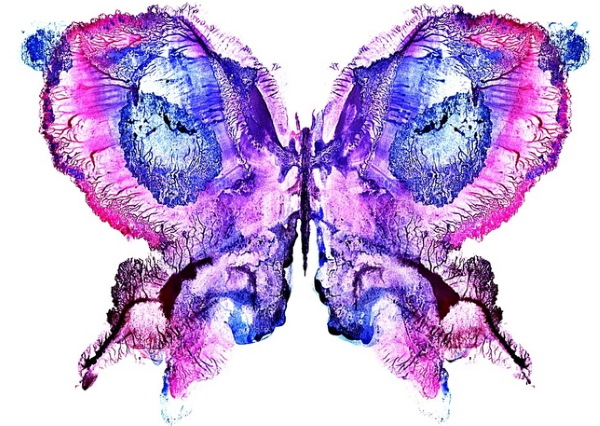
- The image is applied to one side of the sheet so that the middle is on the fold (for example, the body of a butterfly, the core of a flower, etc.); the second part of the sheet should remain clean;
- For best results, it is best to advise children not to think about color combinations or focus on small details; therapeutic painting does not aim to create a perfect image;
- When the first part of the drawing is finished, the sheet should be carefully folded and the halves pressed together. It is important to do this before the paint dries;
- After this, the drawing can be unfolded. Half of the image will be printed on the other side of the sheet and the drawing will become whole.
When the drawing is ready, you can add small details and add decorative elements – rhinestones, glitter, beads.
Drawing "Finish drawing the half" on the cells in the notebook
Drawing by cells allows children to acquire their first drawing skills.
Thanks to this technique, the following occurs:
- Development of the eye, spatial-temporal representations, visual perception;
- Improving imagination;
- Improving hand motor skills;
- Preparing the hand for writing;
- Preparing the prerequisites for the development of voluntary attention;
- Acquiring such qualities as perseverance, attention to detail, and diligence.
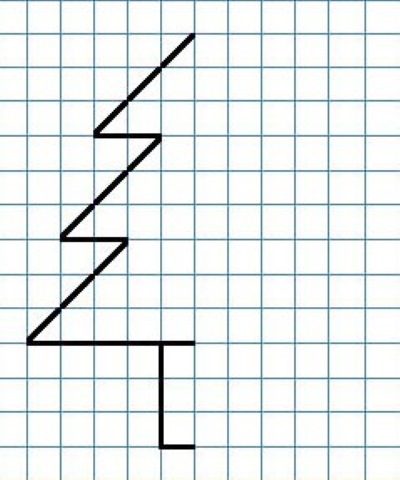 | 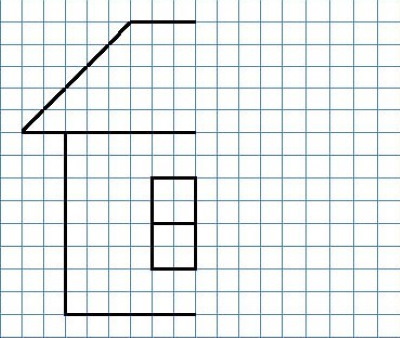 |
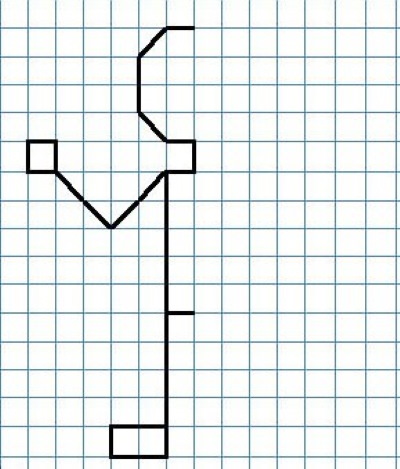 |  |
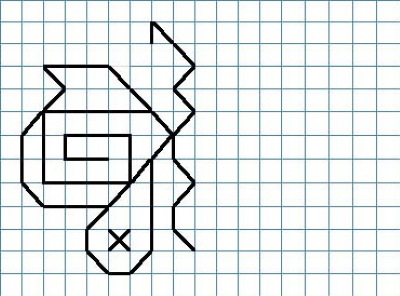 | 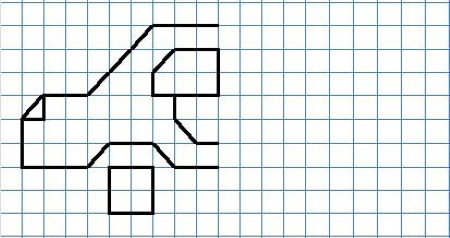 |
Drawing according to this principle is convenient because the child already sees a sample in front of him, the movements themselves are simple and clear. All that is required from the teacher is to give a short instruction, and then the child will cope with the task himself.
Children who are not yet familiar with the technique can be given the simplest drawings with a minimum number of details. More complex images can attract the attention of older children. The task based on the principle of "finish drawing the second half of the picture" provides an opportunity for an interesting pastime and combines learning with creativity.
Master class: drawing with both hands at the same time
The main advantage that drawing with two hands provides a child is the ability to activate and subsequently develop both hemispheres of the brain.
This makes it possible not only to develop valuable learning skills in the child – perseverance, the ability to concentrate, but also has a beneficial effect on coordination of movements.
Activation of both hemispheres of the brain also allows a person to enter a state of super learning, when the quality of the processes of acquiring and developing knowledge, skills, and abilities is significantly increased.
You can start learning this technique with wooden stencils-labyrinths: the child is asked to move the slider along the intended trajectory first with one hand, then with the other, and then with both at the same time. After the principle of movement is understood and executed, you can take up paper and pencils.
The designs should be selected in such a way that they are simple and have clear axial symmetry.
Drawing with two hands may seem simple only at first glance. In fact, it puts both the child's brain and body in non-standard, extremely unusual conditions. Therefore, you should start with the simplest forms - straight horizontal and vertical lines, arcs, spirals and circles. And then - to finished images.
Later, the task can be made more difficult by asking children to move the pencils in different directions.
A significant advantage of drawing is that the development of higher mental functions occurs very easily, in a playful form and almost unnoticeably for the child. It also helps to reduce the level of anxiety - a factor that often prevents a child from fully revealing his intellectual potential.
Droplets fall on the grass
The child is asked to trace and color the clouds and raindrops in the drawing.
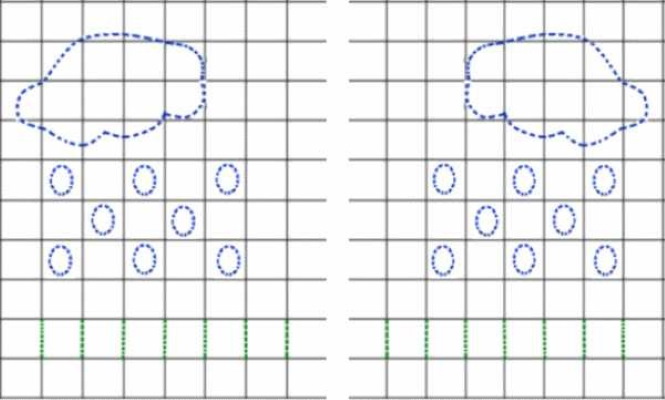
Then, use a green pencil or felt-tip pen to mark the vertical lines – grass.
How the worms went to visit each other
The teacher asks the children to imagine that two worm brothers have not seen each other for a long time and want to meet.

To connect them to each other, you need to draw paths-patterns from opposite edges of the drawing.
Butterfly
Finish drawing the second half of the picture - a task similar to an unusual method for showing creativity for children.

A bright, multi-colored butterfly with an unusual pattern will allow children to develop not only their eye and attention, but also creative thinking.
Vase with flowers
The peculiarity of this task is that the child needs to not only complete the image of the vase and flowers.
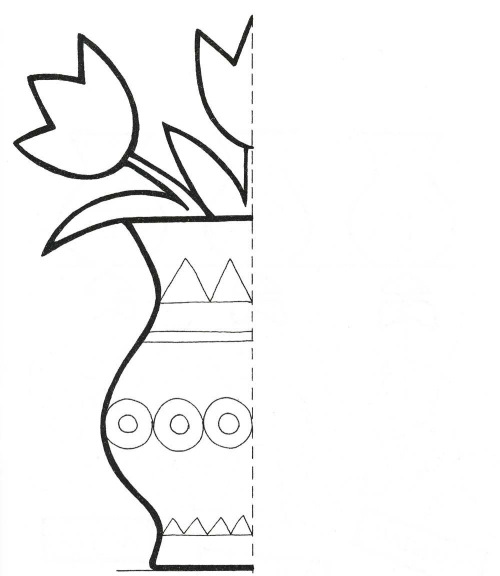
But also to continue the graphic ornament without having support in the form of cells.
Human face
The child is asked to draw half of a person’s face, taking into account all the features: emotional state, proportions, accessories.
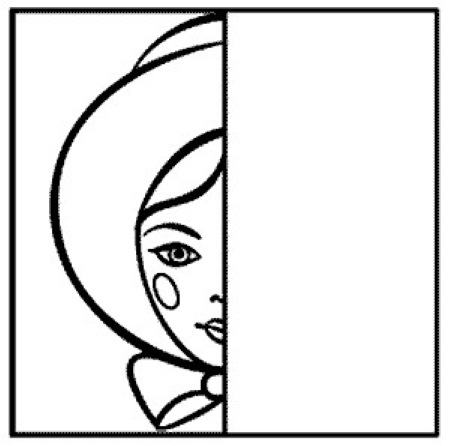 | 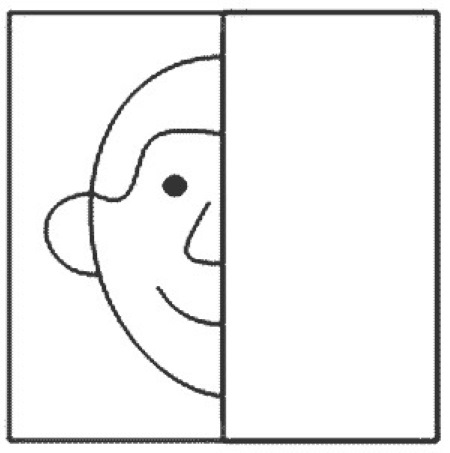 | 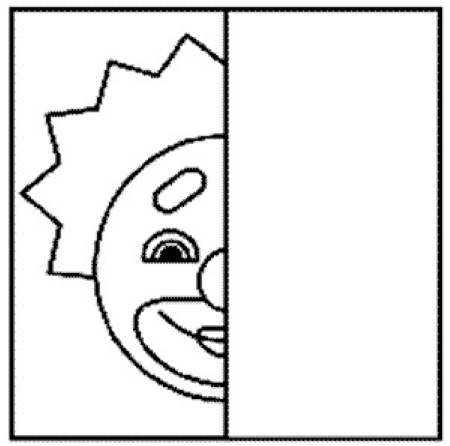 |
Examples above.
Exercise "Draw a pair for the duckling"
This is a more complex version of two-handed drawing.
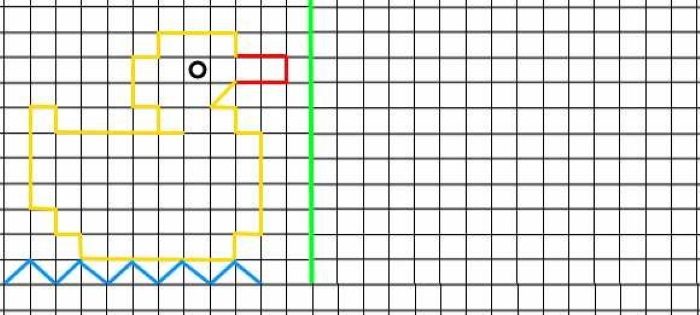
The child is asked to draw the second duckling in mirror image, that is, so that they swim towards each other.
Exercise "Roosters"
The picture shows cockerels who are constantly quarrelling over the grains indicated by dots inside the rectangles.
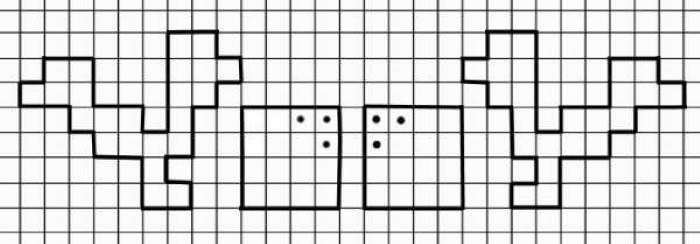
The children's task is to finish drawing them with both hands in parallel, and then color the birds themselves.
Exercise "Hedgehogs"
This is a similar task, to complete which you first need to draw the hedgehogs' needles with both hands.
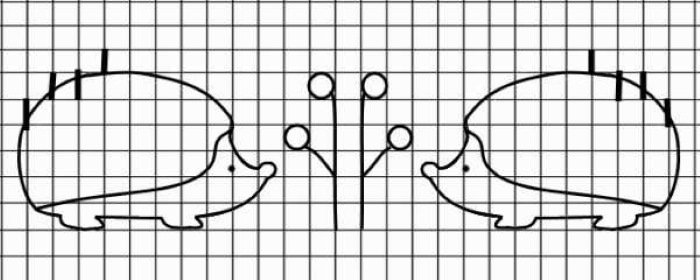
Then - complete the tree standing between them.
Double Doodling - Art Therapy
Doodling is a drawing technique using simple free lines, dots, curls and circles. Its characteristic feature is the absence of strict rules and requirements.
The artist independently controls the process, selecting the forms and means that he likes. The selection of patterns occurs intuitively, under the influence of emotions and feelings rather than reason and logic.
Classic doodling is performed with one, working hand. Double, respectively, with both, which allows to increase the therapeutic effect many times over.
For the lesson, you can give the child a simple image and suggest adding patterns and ornaments to it (for example, painting a dress or other item of clothing, decorating a vase, etc.)
Mirror Drawing with Preschooler. Ideas
To make the task easier for the child, you can suggest that he or she first not draw, but trace the ready-made template lines with both hands. To prevent the hand from slipping or moving to the side during the process, the sheet can be fixed on the table with paper tape.
For the youngest children, you can put markers in their hands and place them at the starting point of the image. Older children can do all of these steps on their own; it's best to keep prompts and instructions to a minimum, but always be nearby and supervise the process as needed.
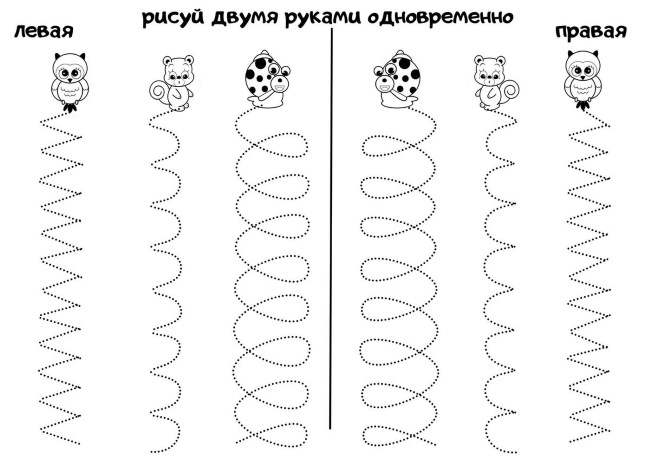

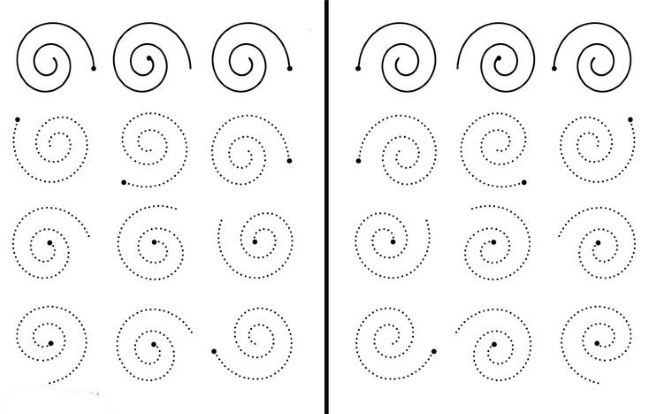
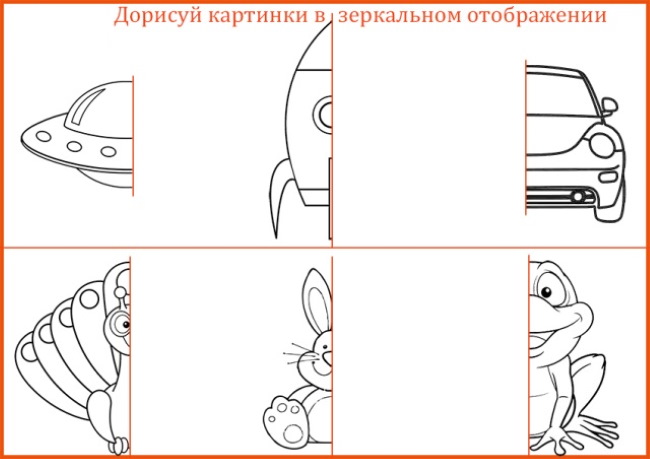
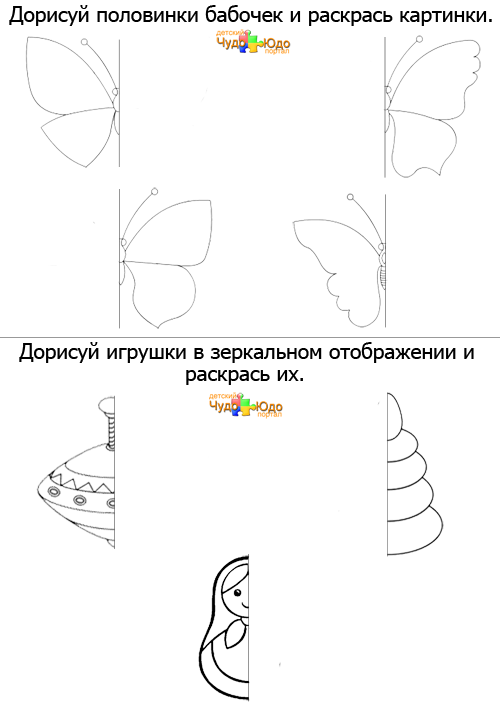
Once the child has learned to trace the contours of the image with both hands, you can move on directly to drawing. For example, ask the student to finish drawing the second half of the drawing based on what is already depicted on the sheet. At this stage, you can move away from squared paper in favor of a clean white A4 sheet.
The child's improved eye will allow him to draw without using reference points and schematic bases that make drawing easier. After this stage of drawing has also been mastered, it will be possible to move on to two-handed drawing without relying on the existing parts of the image.
Two-handed painting of whole pictures. Ideas for children
Once the child has mastered the technique of two-handed drawing, you can finally move away from templates and draw entire pictures with a specific plot with both hands. It is not at all necessary that they be symmetrical: drawing various objects with both hands will bring the skills of right-brain drawing to a qualitatively new level.

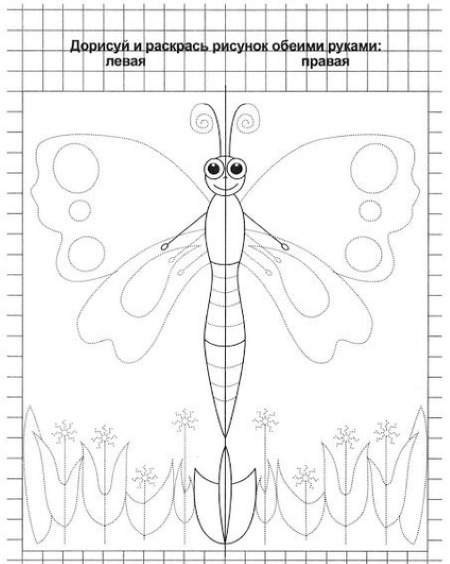
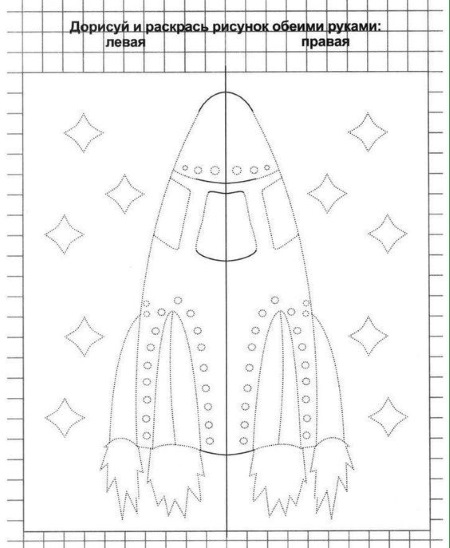
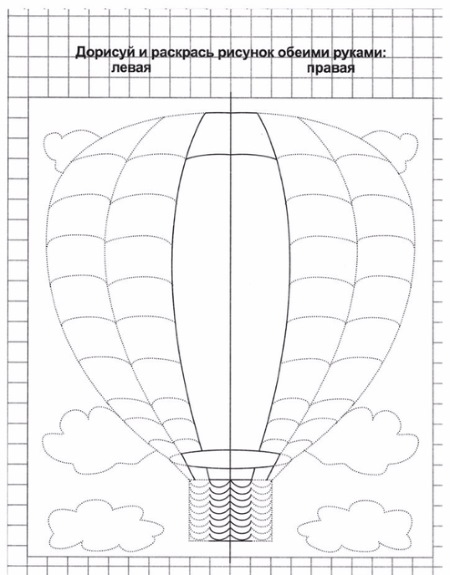
For right-hemisphere drawing, you can use not only paints, but any natural or loose materials, which can simply be laid out in a certain sequence.
The child's finishing of the second half of the drawing, drawing with both hands and other non-standard painting techniques make it possible to organize children's leisure time not just interestingly, but in the most exciting way. Such creative lessons reveal such internal resources in the child that he did not even know about.
Video about drawing
Finish drawing the second half of the picture:
